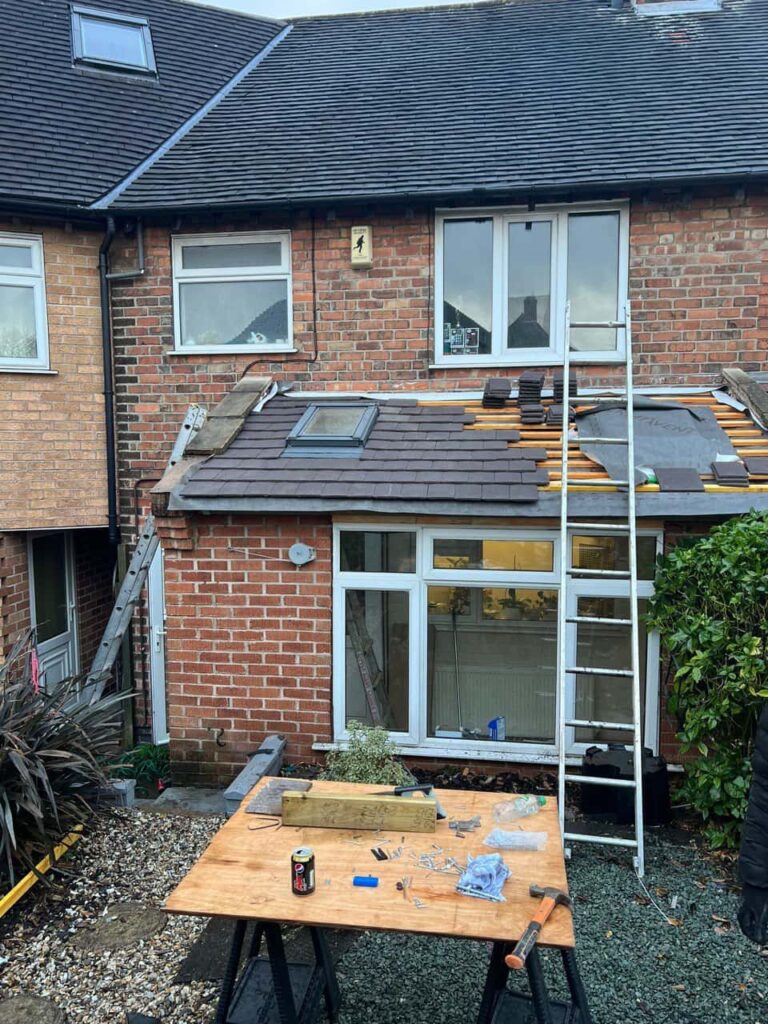Introduction: At Stapleford Roofing Repairs, we understand the unique challenges that flat roofs present. One common issue that can arise is ponding water, where water collects and remains on the roof surface. If left unchecked, ponding water can lead to serious damage and costly repairs. In this blog post, we’ll discuss what ponding water is, why it occurs, and how you can effectively deal with it.
What is Ponding Water?
Ponding water accumulates water on a flat roof that doesn’t drain away within 48 hours after rainfall. Flat roofs are designed with a slight slope, unlike pitched roofs, but water can pool in certain areas when this slope is insufficient or obstructed. This stagnant water can cause various problems, including damage to roofing materials and potential leaks into the building.
Why Does Ponding Water Occur?
Several factors can contribute to ponding water on flat roofs:
1. Insufficient Roof Slope
Issue: If a flat roof lacks the necessary slope (also known as the “pitch”), water may not flow effectively towards the drainage points.
Solution: Ensure the roof has an adequate slope for proper water drainage. This often involves regrading or adjusting the roof structure.
2. Clogged Drains and Gutters
Issue: Blockages in the roof drains or gutters can prevent water from flowing away from the roof.
Solution: Regularly clean and maintain all drainage systems to ensure they are free from debris and functioning correctly.
3. Roof Membrane Damage
Issue: Damaged or deteriorated roofing membranes can create depressions or low spots where water can accumulate.
Solution: Inspect the roof membrane for any signs of damage or wear. Repair or replace damaged sections promptly.
4. Debris Accumulation
Issue: Leaves, branches, and other debris can obstruct drainage paths and cause water to pool.
Solution: Regularly clean the roof surface and drainage areas of debris to maintain proper water flow.
How to Address Ponding Water
1. Conduct a Thorough Inspection
Start by inspecting your flat roof for any visible signs of ponding water. Look for low spots, blockages, and damage to the roofing materials or drainage systems.
2. Enhance Drainage
a. Install Additional Drains: If your roof consistently experiences ponding water, consider installing additional drains to improve water flow.
b. Use Scuppers and Overflow Drains: Scuppers can help redirect water away from the roof, and overflow drains can act as backups to prevent water build-up during heavy rain.
3. Repair Roof Membranes
If your roof membrane is damaged, it’s essential to repair or replace it to prevent leaks and further issues. A professional roofing contractor can assess the extent of the damage and recommend the appropriate solutions.
4. Regrade the Roof
In cases where the roof’s slope is insufficient, regrading may be necessary to ensure that water flows toward the drainage points. This typically involves adding a layer of material to create the desired slope.
5. Implement Regular Maintenance
a. Clean Gutters and Drains: Ensure that gutters and drains are cleaned regularly to prevent blockages and ensure proper water flow.
b. Schedule Regular Inspections: Regular inspections can help identify potential issues before they become significant problems. Consider scheduling annual or bi-annual inspections with a professional.
Preventive Measures
1. Use High-Quality Roofing Materials: Opt for durable roofing materials that can withstand ponding water and resist damage.
2. Apply Protective Coatings: Consider applying a protective coating to your roof to enhance its water resistance and longevity.
3. Ensure Proper Installation: Properly installing roofing materials and drainage systems prevents ponding water. Work with experienced roofing professionals to ensure that your roof is installed correctly.
Conclusion: Dealing with ponding water on flat roofs requires prompt action and regular maintenance to avoid serious issues. By understanding the causes of ponding water and implementing effective solutions, you can protect your roof and extend its lifespan.
Call us on: 0115 647 1193
Click here to find out more about Stapleford Roofing Repairs
Click here to complete our contact form and see how we can help you with your roofing needs.

